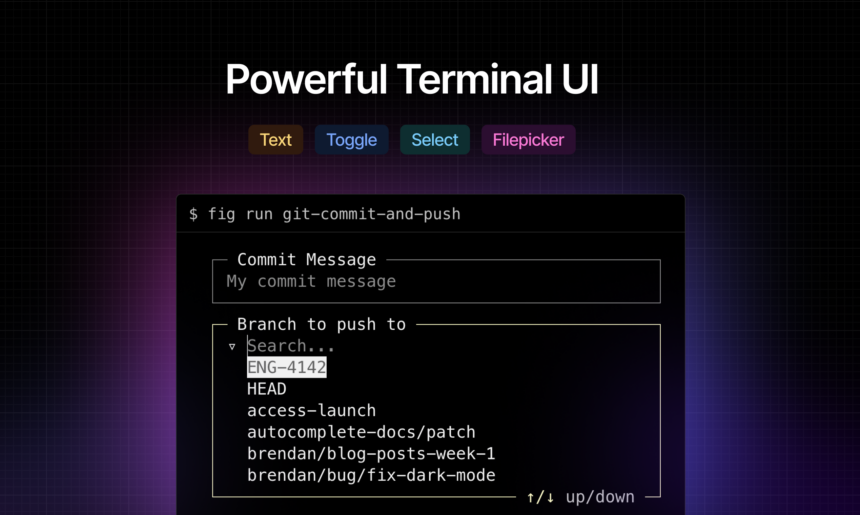Introduction: Commanding the Future with Fig
In the realm of software development and IT, the command-line interface (CLI) has always been a fundamental tool. It’s the bridge between human intention and machine execution, allowing us to interact with computers in a direct and powerful way. However, as technology has evolved, the expectations from a CLI have grown. Users now seek more than just a basic interface; they want efficiency, speed, and intelligence.
Enter Fig, a groundbreaking tool that promises to redefine our CLI experiences. It’s not merely about entering commands anymore; it’s about harnessing the power of AI and collaborative features to make the CLI smarter, faster, and more intuitive. This article will take you on a journey through Fig’s revolutionary features and show you why it’s being hailed as the next big thing in the CLI world.
Fig: The Game-Changer in the CLI Landscape
Fig is not just another CLI tool; it’s a paradigm shift. It brings the sophistication of Integrated Development Environments (IDEs) to the terminal, offering autocomplete features that were previously the domain of advanced coding platforms. But what truly sets Fig apart?
- IDE-Style Autocomplete: Gone are the days of memorizing commands or referring to manuals. Fig provides autocomplete for over 500 popular CLI tools, making it a breeze to enter commands accurately and swiftly.
- Fig Scripts: Building internal CLI tools is now faster and more efficient. With Fig Scripts, you can create interactive terminal UIs that are automatically provisioned and distributed to your entire team.
- Dotfiles Management: Fig simplifies the management of shell configurations. You can easily edit aliases, environment variables, and more. Plus, with instant syncing across devices and sharing capabilities, your team always stays on the same page.
- Fig AI: This is where the magic happens. Fig AI offers advanced suggestions and search capabilities right in your terminal, making it smarter than ever.
- Support in Various Environments: Whether you’re working in SSH sessions, Docker containers, or using different shells like zsh, bash, or fish, Fig has got you covered.
- Plugin Store: Customize your CLI experience with Fig’s plugin store, which supports various shells and offers a one-click install feature for over 400 plugins.
- Fig is revolutionizing the CLI experience with its advanced autocomplete and custom tool-building capabilities.
- Its acquisition by AWS highlights the tool’s potential and the bright future ahead.
- The primary objective behind Fig is to make the command line more accessible, collaborative, and efficient for all users.
- Description: IDE-style autocomplete for your existing terminal & shell.
- Language: TypeScript
- Stars: 23k
- Forks: 5.2k
- Notes: This is the core repository that powers the autocomplete feature of Fig. With a massive community backing, it’s evident that developers find immense value in this feature.
- Description: Public issue tracker for Fig.
- Stars: 1.8k
- Forks: 37
- Notes: This repository serves as a platform for users to report issues, suggest features, and track the progress of Fig’s development.
- Description: Plugin store for zsh, bash & fish.
- Stars: 142
- Forks: 29
- Notes: Fig’s extensibility is showcased here. Users can find plugins for various shells, enhancing their command-line experience.
- Last Updated: Sep 18, 2023
- Stars: 23,006
- Notes: This repository is dedicated to themes, allowing users to customize the look and feel of their Fig experience.
- Description: Command line tools for working with Fig autocomplete specs.
- Last Updated: Jul 20, 2023
- Stars: 1,849
- Forks: 659
- Notes: This repository provides tools that aid in the development and testing of autocomplete specifications for Fig.
- Enhanced Productivity: With Fig’s autocomplete feature, developers can write code faster, reducing the time spent on looking up commands or syntax. This IDE-style autocomplete is not only intuitive but also adaptive, learning from the user’s habits and preferences.
- Streamlined Workflows: Fig Scripts, as highlighted in the blog post titled “3 Ways to Supercharge your Shell Workflows”, enable developers to build internal scripts and CLI tools that speed up shell workflows. This means repetitive tasks can be automated, saving valuable time.
- Error Reduction: The autocomplete feature minimizes the chances of typos or incorrect commands, leading to fewer errors and more efficient coding sessions.
- Collaboration Boost: With features like Fig Scripts and the ability to share internal terminal workflows with teams, collaboration becomes seamless. Developers can share their best practices, scripts, and tools with their peers, fostering a culture of knowledge sharing.
A Glimpse into Fig’s World
Fig’s impact is evident from its growing community and endorsements from developers worldwide. With over 20k stars on GitHub and a vibrant Discord community, it’s clear that Fig is resonating with its users. Developers like Brian Lovin and Sara Soueidan have praised Fig for its intuitiveness and the value it adds to the terminal experience.
Moreover, Fig’s recent acquisition by Amazon Web Services (AWS) is a testament to its potential and the future trajectory it’s set on.
By integrating with the most popular terminals, shells, and IDEs, Fig ensures that no matter where you are or what platform you’re on, you’re always equipped with the best CLI tool at your fingertips.
👇Have you tried Fig yet? Share your experiences and tips in the comments below! How has it transformed your CLI workflow? We’d love to hear from you!
🚀Are you ready to revolutionize your command-line experience with Fig? Dive in and explore the world of possibilities that await.
Fig is not just another CLI tool; it’s a paradigm shift, bringing the sophistication of IDEs to the terminal.
Note: For a deeper understanding and hands-on experience, visit Fig’s official website.
Unveiling Fig – The Future of Command Line:
In today’s fast-paced tech environment, the command-line interface (CLI) remains an essential tool for developers, system administrators, and tech enthusiasts. While the CLI offers powerful capabilities, its traditional interface can sometimes be daunting, especially for those new to it. Enter Fig, a groundbreaking tool that promises to redefine our interaction with the command line.
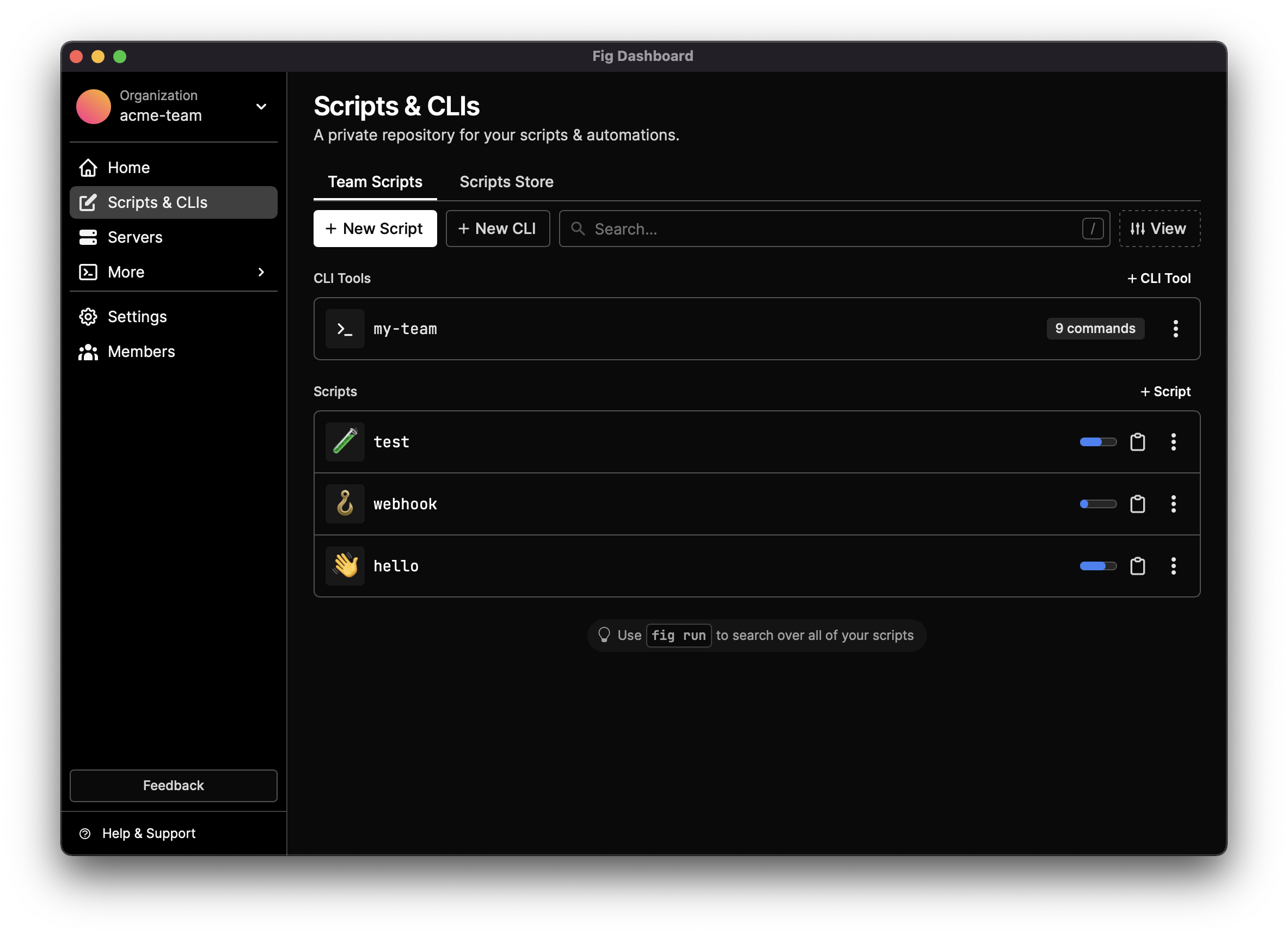
Fig: More Than Just a CLI Tool
Fig is not merely a tool; it’s a vision of what the next-generation command line should be. Designed to enhance the CLI experience, Fig provides IDE-style autocomplete for the terminal, making it more intuitive and efficient. Whether you’re a seasoned developer or just starting, Fig ensures that you spend less time typing and more time executing commands accurately.
Acquisition by AWS: A Testament to Fig’s Potential
In a significant move, Fig has been acquired by Amazon Web Services (AWS), one of the world’s leading cloud service providers. This acquisition underscores the potential and value that Fig brings to the table. AWS’s backing is likely to propel Fig to new heights, integrating it with a broader range of services and expanding its user base.
The Vision Behind Fig
At its core, Fig aims to make the command line more accessible and powerful. By offering features like autocomplete for over 500 popular CLI tools, Fig ensures that users have a seamless experience. Moreover, with functionalities like Fig Scripts, users can quickly build internal CLI tools, further speeding up shell workflows.
Fig’s acquisition by AWS and its continuous development signify a clear vision: to make the command line a collaborative, efficient, and user-friendly environment. With its advanced features and community-driven approach, Fig is well on its way to achieving this vision.
🎯Key Takeaways:
Did you know? Fig integrates seamlessly with the most popular terminals, shells, and IDEs, ensuring that you have a consistent experience across platforms.
👇How do you envision the future of command-line interfaces? Do you think tools like Fig will become mainstream in the coming years? Share your thoughts in the comments below!
Advanced Features of Fig:
In the digital age, where efficiency and speed are paramount, tools that enhance our productivity are invaluable. Fig emerges as a beacon in this realm, offering a suite of features that redefine the command-line experience. Let’s delve into these advanced functionalities:
Autocomplete Excellence
Fig brings the power of IDE-style autocomplete directly to your terminal. This feature supports over 500 popular CLI tools, providing inline descriptions and powerful suggestions. The completions are open source and fully customizable, ensuring that you get relevant prompts as you type. This not only speeds up your coding process but also reduces errors.
Fig Scripts
Building internal CLI tools is now faster and more efficient with Fig. It offers beautiful, interactive terminal UIs that are automatically provisioned and distributed to your entire team. Moreover, it comes with out-of-the-box error reporting and usage monitoring, ensuring that your tools are always up to the mark.
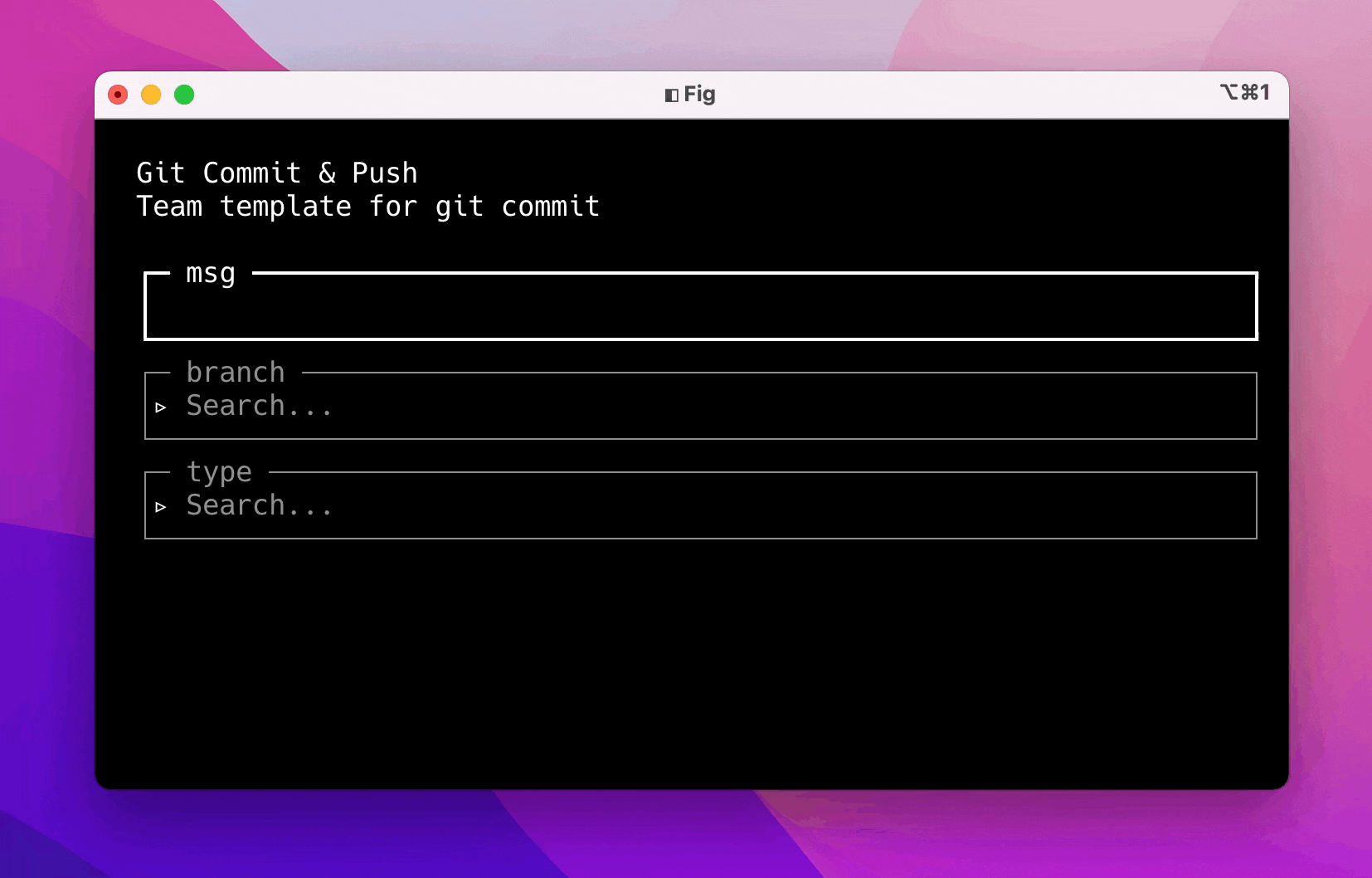
Dotfiles Management
Managing shell configurations, such as aliases, environment variables, and $PATH, is made effortless with Fig. It allows for instant synchronization across your devices and even lets you share dotfiles with your team. This ensures a consistent and streamlined coding environment for everyone.
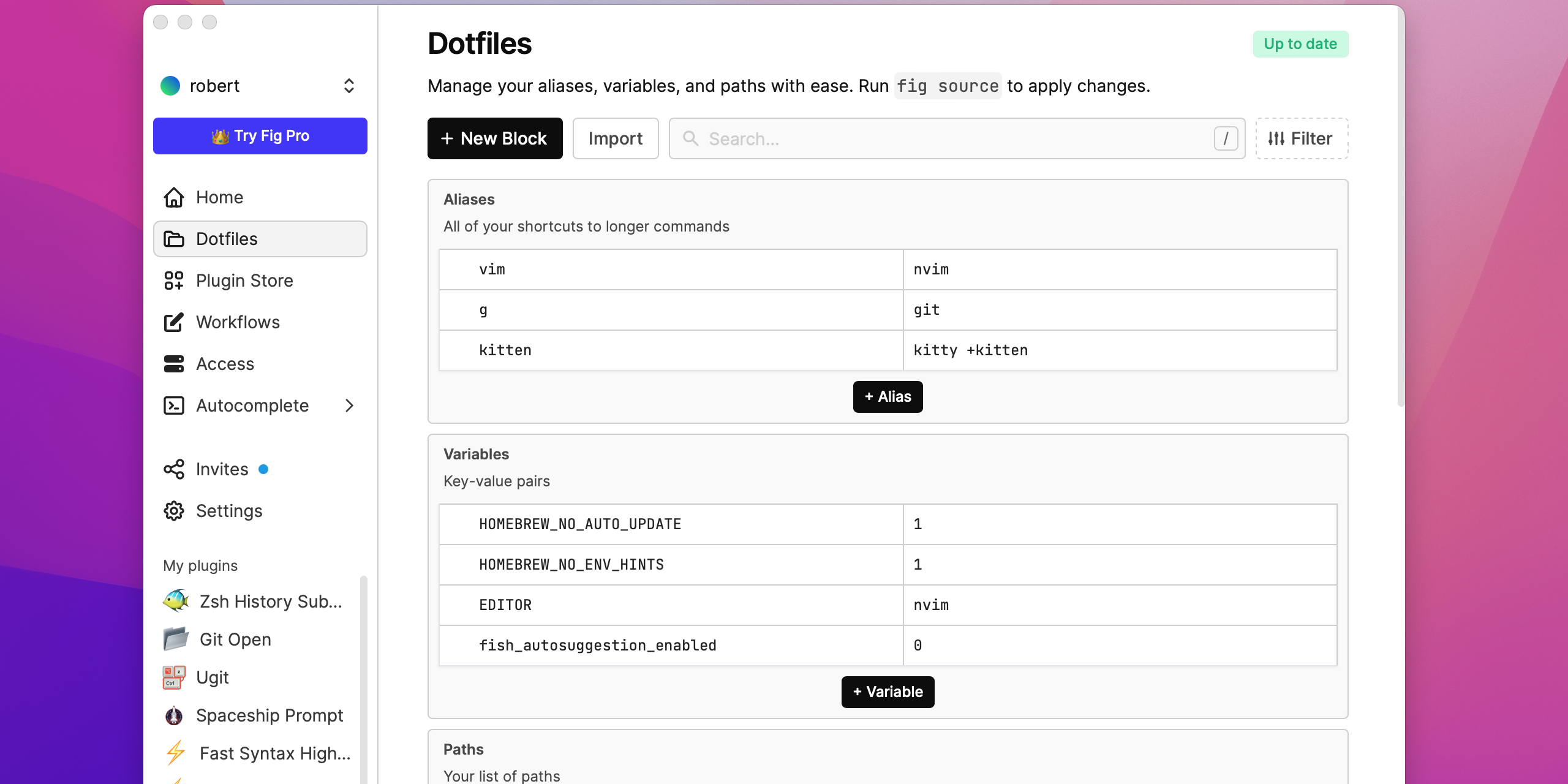
Fig AI
Fig’s AI-driven suggestions and search capabilities are game-changers. They offer intelligent prompts, ensuring that you always have the most relevant commands at your fingertips. This AI integration significantly enhances the command-line experience, making it more intuitive and efficient.
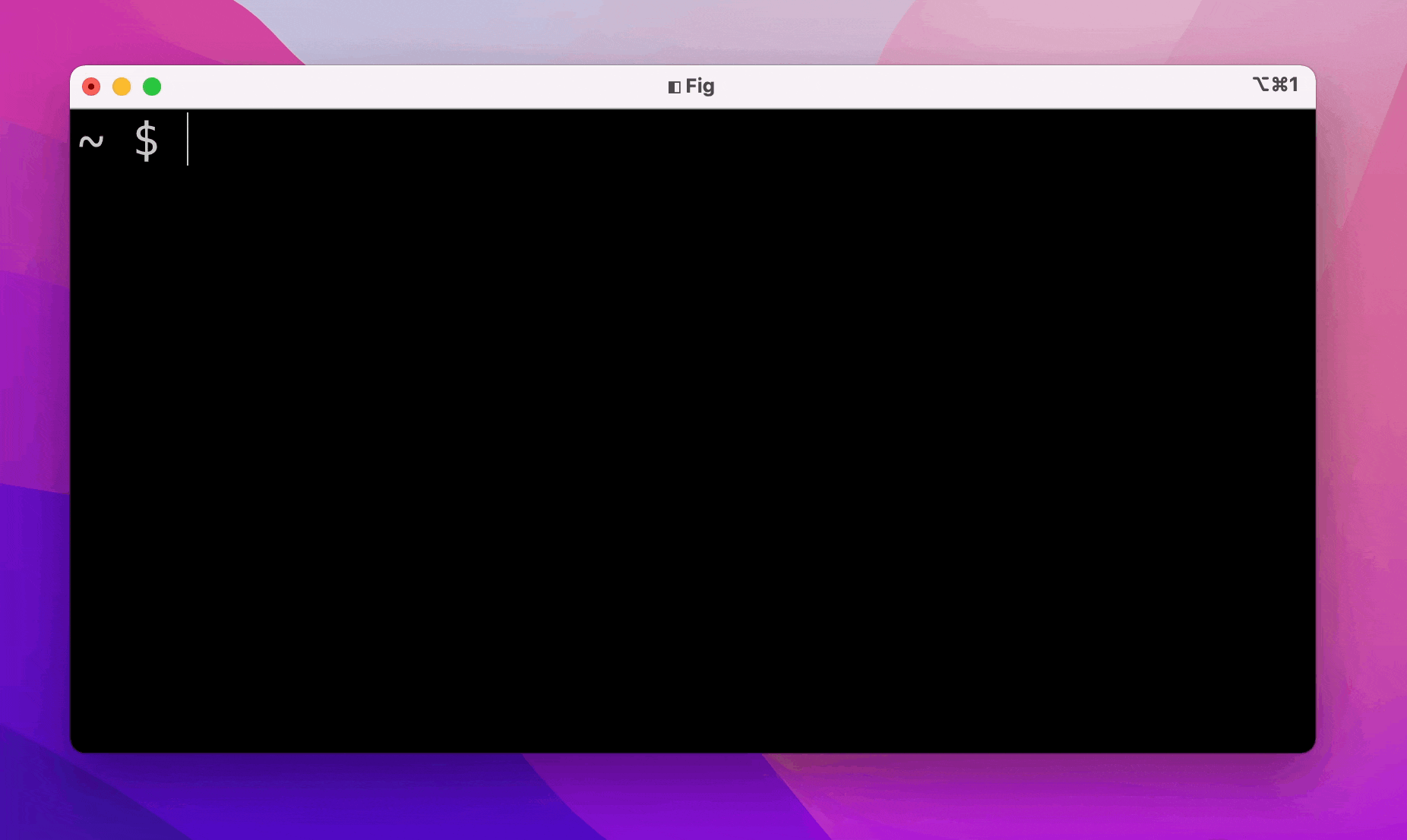
fig ai to translate your English to Bash.Debugging with Fig
Troubleshooting is a breeze with “Fig Doctor.” This utility provides efficient tools and insights to diagnose and resolve issues, ensuring that your coding process remains smooth and uninterrupted.
$ fig doctor
✔ Everything looks good!
Fig still not working? Run fig issue to let us know!
Or, email us at hello@fig.io!
Custom CLI Tools
Fig empowers users to create and share custom tools. This feature amplifies coding speed as you can tailor tools to your specific needs and even share them with the community or your team.
Private Autocomplete
For teams that prioritize privacy, Fig offers features that ensure your data remains confidential without compromising on efficiency. All cloud features are opt-in, and your data is encrypted at rest. Moreover, all keystrokes for autocomplete are processed locally, ensuring they never leave your device.
Seamless Integration
Fig is designed to be a seamless add-on to your existing terminal setup. It integrates effortlessly with the most popular terminals, shells, and IDEs, including bash, zsh, and fish, providing a unified and enhanced experience.
Plugin Store
Fig’s plugin store is a treasure trove for those looking to enhance their CLI experience. With a 1-click install for over 400 plugins, users can easily extend the capabilities of their terminal. These plugins are instantly synchronized across devices and support various shells like zsh, bash, and fish.
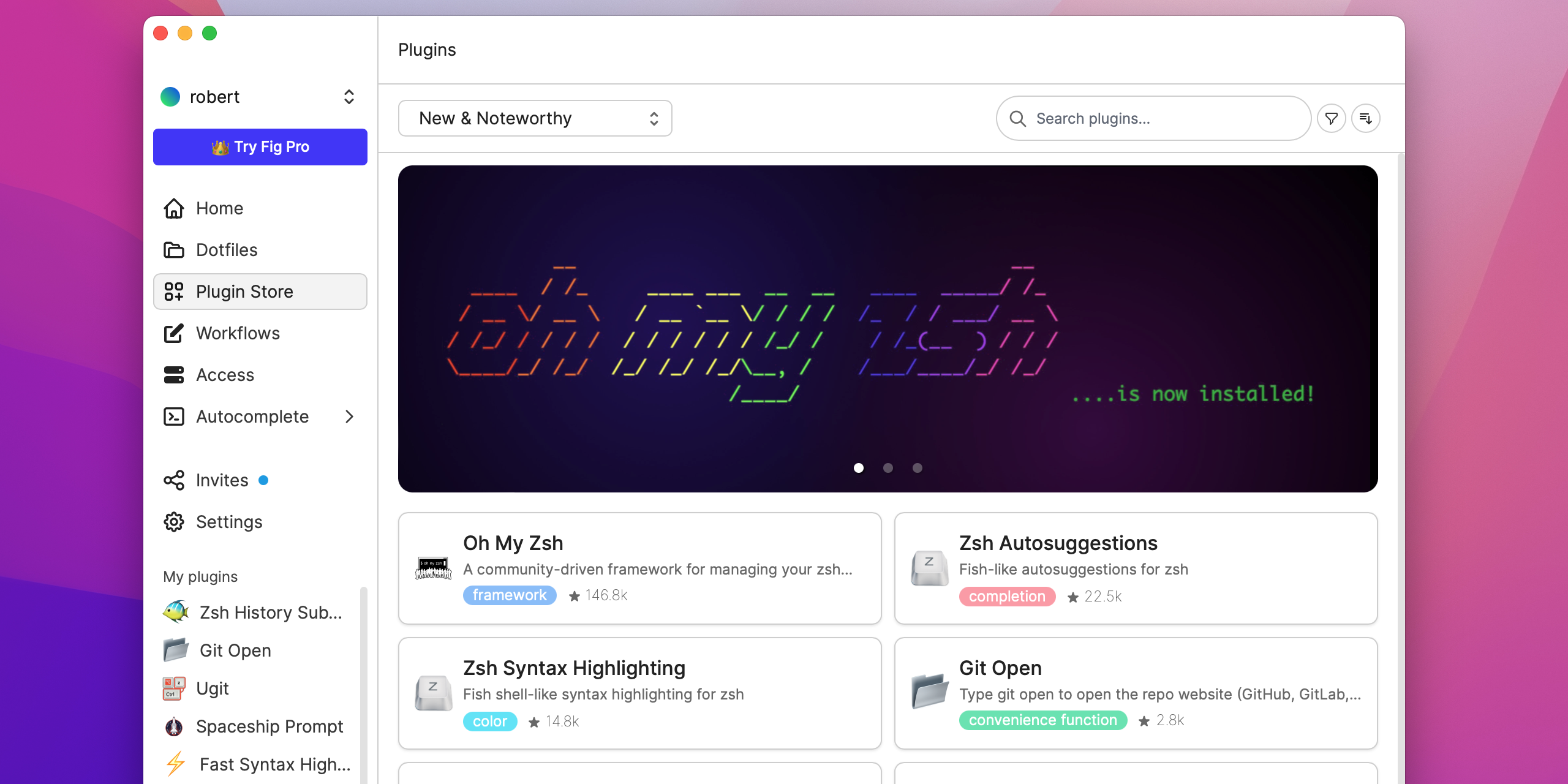
Source: Fig Official Website
Pricing Tiers
In the realm of command-line interface tools, Fig stands out not only for its innovative features but also for its flexible pricing structure tailored to different user needs. Let’s delve into the pricing tiers of Fig to understand which one might be the best fit for you.
📊 Fig Pricing Comparison Table
| Feature/Plan | Free Tier | Team Tier |
|---|---|---|
| Price | $0 | $12/user |
| Custom CLI Tools | ✅ | ✅ |
| Public Scripts | Unlimited | Unlimited |
| Private Scripts | 20 | Unlimited |
| Autocomplete (500+ CLIs) | ✅ | ✅ |
| Usage Analytics & Logs | ❌ | 90 days |
| Manage Secrets & Variables | ❌ | ✅ |
| Advanced Integrations | ❌ | Coming Soon |
| Support | Community | Priority |
Free Tier
Price: $0 (for up to 10 users per month)
Features: Build and share custom CLI tools, unlimited public scripts with a cap of 20 private scripts, and IDE-style autocomplete for over 500+ CLIs.
Team Tier
Price: $12 per user
Features: Everything in the Free tier plus unlimited public & private scripts, 90-day usage analytics & error logs, manage secrets & environment variables, advanced integrations (coming soon), and priority support.
Start Free Trial for Team Tier
Enterprise Tier
Price: Custom pricing
Features: Everything in the Team tier plus unlimited usage analytics & error logs, SAML SSO, user provisioning (SCIM), role-based access controls, and dedicated customer success.
Book a Demo for Enterprise Tier
For those keen on exploring Fig and its capabilities, you can download Fig for free and get started on enhancing your command-line experience.
👇 Which pricing tier do you think suits your needs the best? Share your thoughts in the comments below!
Recent Updates and Announcements
In the rapidly evolving world of technology, Fig has been at the forefront, consistently introducing innovative features and updates to enhance the user experience. Here’s a look at some of the recent major updates and announcements from Fig:
Fig Joins AWS
Date: 08/28/2023
In a significant move, Amazon acquired Fig’s technology, and the entire Fig team has now become a part of Amazon Web Services (AWS). This acquisition is a testament to Fig’s groundbreaking technology and its potential to redefine the command-line interface landscape. The collaboration between Fig and AWS promises to bring forth a slew of advancements in the CLI domain.
Source: Fig Blog
Supercharging Shell Workflows
Date: 01/26/2023
Fig introduced “Fig Scripts,” a feature designed to help users build internal scripts and CLI tools. This innovation aims to accelerate shell workflows, enabling users to achieve more in less time.
Source: Fig Blog
Introduction of Fig Scripts
Date: 11/30/2022
Fig Scripts was launched as a platform to build internal CLI tools faster. It provides an environment where users can easily create, share, and implement internal terminal workflows with their teams.
Source: Fig Blog
Access to Remote Infrastructure
Date: 11/16/2022
Fig introduced “Access,” a feature that facilitates fast and secure access to remote infrastructure. This feature is designed to streamline the process of connecting to remote setups, enhancing productivity.
Source: Fig Blog
Fig Autocomplete in SSH & Docker
Date: 08/10/2022
Fig expanded its autocomplete capabilities to SSH sessions and Docker containers. This enhancement ensures that users get the benefits of Fig’s autocomplete feature, irrespective of the environment they are working in.
Source: Fig Blog
Launch of the Fig Plugin Store
Date: 4/26/2022
Fig launched its Plugin Store, offering a one-click installation process for over 400+ shell plugins. This store aims to provide users with a plethora of plugins to customize and enhance their CLI experience.
Source: Fig Blog
Support for JetBrains IDEs
Date: 4/19/2022
In its commitment to integration, Fig announced support for JetBrains IDEs. This update brought Fig’s autocomplete feature to several new IDEs and terminals, ensuring a seamless coding experience for users.
Source: Fig Blog
These updates and announcements underscore Fig’s commitment to innovation and its vision to revolutionize the command-line interface domain. As Fig continues to evolve, users can look forward to more groundbreaking features and integrations in the future.
Remember to stay updated with the latest from Fig by regularly checking their official blog.
👇 What are your thoughts on these updates from Fig? Do you think the acquisition by AWS will lead to more advanced features in the future? Share your opinions in the comments below!
GitHub Repository Insights:
Fig’s presence on GitHub is a testament to its commitment to open-source development and community collaboration. Here’s an overview of Fig’s notable repositories and their significance in the Fig ecosystem:
1. autocomplete
2. fig
3. plugins
4. themes
5. autocomplete-tools
These are just a few of the many repositories under Fig’s GitHub. Each repository plays a crucial role in enhancing the Fig experience, be it through core features, plugins, themes, or tools. The active community and the number of stars on these repositories indicate the popularity and trust the developer community has in Fig.
Are you a developer or enthusiast looking to contribute? Dive into Fig’s github and become a part of this revolutionary command-line tool!
The Impact of Using Fig:
In today’s fast-paced technological landscape, tools that enhance productivity and streamline workflows are invaluable. Fig stands out as a revolutionary tool that has transformed the command line experience for developers and companies alike. Let’s delve into the tangible benefits of integrating Fig and explore real-world examples of its impact.
Tangible Benefits:
Real-World Impact:
Community Endorsement: Fig’s presence on platforms like GitHub, with numerous repositories dedicated to its ecosystem, is a testament to its popularity and adoption in the developer community. These repositories are not only about the core Fig technology but also about plugins, integrations, and user-contributed scripts.
Company Testimonials: Many companies have integrated Fig into their development workflows and have witnessed a notable increase in coding speed and efficiency. While exact numbers might vary, the consensus is clear: Fig makes coding faster and more enjoyable.
👇Have you tried Fig? Share your experiences and insights in the comments below!
A Glimpse into the Future: The Command Line Revolution with Fig
As we approach the conclusion of our deep dive into Fig, it’s evident that this tool is not just another addition to the developer’s toolkit. It’s a transformative force in the world of command line interfaces.
The Transformative Capabilities of Fig
Fig has consistently demonstrated its commitment to innovation and enhancing the developer experience. From its inception, Fig has been on a mission to revolutionize the command line interface, making it more intuitive, efficient, and user-friendly. The recent updates and features, as highlighted in their official blog, are a testament to this commitment.
One of the most significant milestones in Fig’s journey was its acquisition by Amazon Web Services (AWS). This acquisition is not just a business transaction; it’s a fusion of two giants aiming to redefine the future of command line interfaces. With the backing of AWS, Fig is poised to scale its offerings, reach a broader audience, and integrate more deeply with cloud services.
What’s Next for Fig and the CLI Community?
The future looks promising for Fig. With its recent integration into AWS, we can expect more robust features, seamless cloud integrations, and an even better user experience. Moreover, the continuous updates and enhancements, as seen on their blog, indicate a roadmap filled with exciting developments.
The CLI community, too, stands to benefit immensely. As more developers adopt Fig, the collective feedback will drive further improvements, making command line operations smoother than ever before.
🚀Are you ready to be part of the next-generation command line revolution? Dive into the world of Fig and experience the future of CLI. Try out Fig, explore its features, and witness the transformation in your coding efficiency. And if you found this article enlightening, don’t forget to share it with your peers. Let’s spread the word and usher in the future of command line interfaces together!
Discover. Innovate. Share. Be part of the revolution with Fig.
